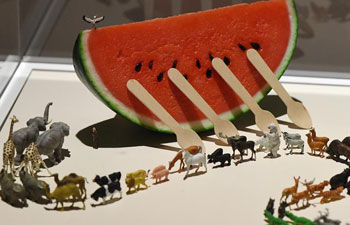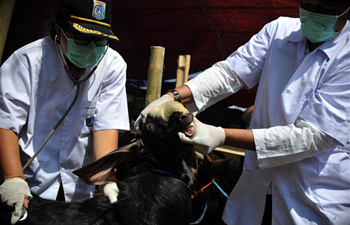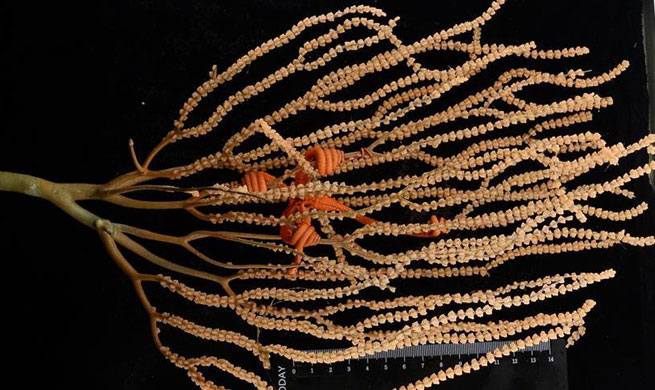CHENGDU, Aug. 24 (Xinhua) -- Chinese scientists announced Thursday that they had artificially bred a Pearl Band Rat Snake, an endangered species peculiar to Sichuan Province in southwest China.
The Chengdu Branch of the Chinese Academy of Sciences said the breeding marked an important step to understanding the species.
Because its habitat is quite limited and its wild population is rather small, it is difficult to fully understand this type of snake, said Ding Li, deputy researcher at the Chengdu Institute of Biology.
The snakes, with dark and yellow stripes, were discovered in Sichuan in 1929. Scientists did not locate them again until the 1980s when Chinese scientists discovered specimens in Wenchuan and Luding counties in Sichuan, confirming they had not gone extinct.
In July 2014, scientists started to look for the snakes, under a state-funded program to investigate and protect small-population biological species in Sichuan.
A male and female snake were caught in July 2014 in Labahe Nature Reserve in Tianquan county. The snake parents did not breed offspring for three years, so researchers put them under sufficient exposure to light to facilitate their mating.
"The eggs have been incubated for over a month, they grow every day, and hopefully will be hatched in another 20 days," said Chen Zening, a lab employee.
"I find this type of snake is rather active during early morning and at night," Ding said.
Their traditional habitat is in forests in western Sichuan and Shaanxi province, between 1,600 and 2,700 meters above sea level. They are likely to live under leaves and in piles of stones in thick woods, Ding said.
"From the new habitat and archive data, we have found the habitat of rat snakes are almost identical to those of pandas, which is a very interesting phenomenon," he said. "The snakes move slowly and are mild and non-poisonous, which means they can only live in a natural environment where there are few competing species."
"The snake and giant pandas may have gone through a similar evolution in climate changes in east Asia," he said.

















